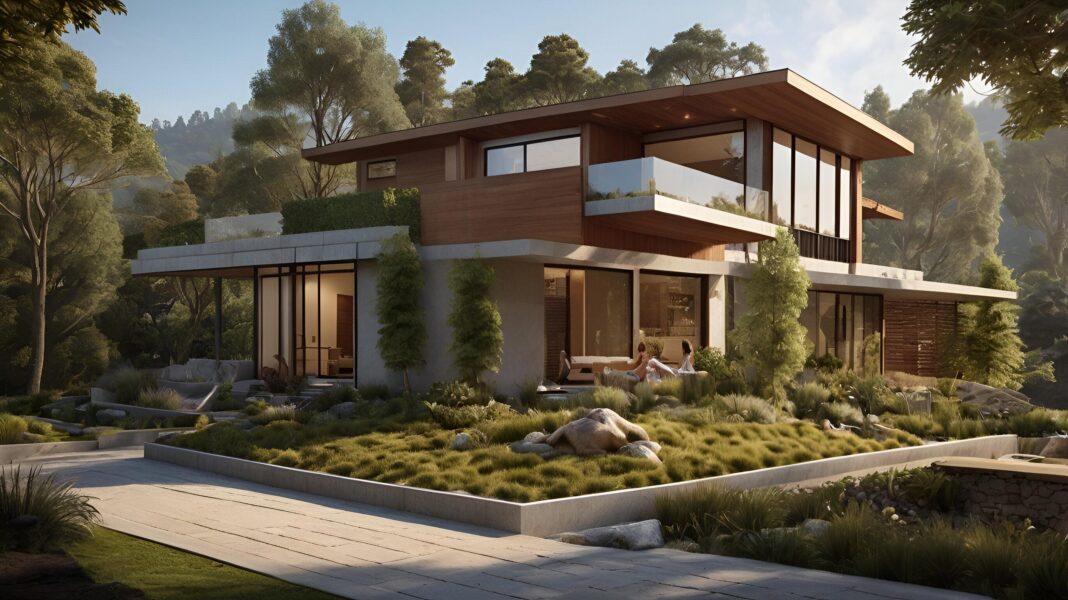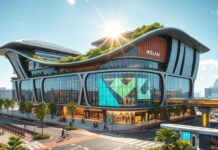Architecture is undergoing a profound transformation, integrating sustainability, technology, and cultural influences. From luxurious nature-inspired resorts to innovative city reconversions, architectural firms like Gensler and Foster + Partners are pushing the boundaries of design.
Architectural Trends in 2025
| Trend | Description |
|---|---|
| Nature-Inspired Resorts | Eco-friendly designs that emphasize sustainability and harmony with nature. |
| City Reconversions | Transforming urban spaces into vibrant, multipurpose communities. |
| Smart Cities | Integrating IoT and AI to create efficient, livable urban environments. |
| Biophilic Design | Incorporating natural elements into buildings to enhance well-being and aesthetics. |
Nature-Inspired Resorts: A Blend of Luxury and Sustainability
Architects are redefining luxury by prioritizing environmental responsibility. Resorts now feature:
- Use of renewable materials like bamboo and reclaimed wood.
- Integration of solar and wind energy for power solutions.
- Water conservation systems including rainwater harvesting.
- Seamless blending with natural landscapes to minimize ecological disruption.
Top Examples
Amalfi Coast Eco-Resort – Designed by Foster + Partners, this sustainable retreat utilizes locally sourced volcanic stones and features vertical gardens that reduce energy consumption.
Rainforest Retreat, Costa Rica – Built entirely with zero-carbon materials, this resort is a prime example of biophilic architecture.
City Reconversions: Reinventing Urban Spaces
Cities worldwide are revitalizing abandoned structures, converting them into multifunctional spaces while preserving historical significance.
Notable Projects
- The High Line, New York – A former railway transformed into a green urban park.
- Tate Modern, London – Repurposed power station into a world-renowned art museum.
- Battersea Power Station, UK – Mixed-use redevelopment merging heritage with modern living.
Technological Innovations Shaping Architecture
Modern architecture is heavily influenced by advancements in AI, robotics, and sustainable materials. Key developments include:
- 3D printing for faster and more sustainable construction.
- AI-powered designs ensuring efficiency and aesthetics.
- Self-healing concrete that increases building lifespan.
- Vertical farming incorporated into urban buildings to promote sustainability.
Looking Ahead: The Future of Architecture
As architects and designers continue to innovate, we can expect a future where cities are more livable, sustainable, and technologically advanced.
Frequently Asked Questions (FAQ)
1. What are nature-inspired resorts?
Nature-inspired resorts are properties designed to blend harmoniously with the natural environment, utilizing sustainable architecture and eco-friendly materials.
2. What are the main principles of sustainable architecture?
Sustainable architecture focuses on energy efficiency, renewable materials, water conservation, and minimal environmental impact in the design process.
3. How are abandoned buildings being repurposed in cities?
Abandoned buildings are often transformed into housing, offices, community centers, or green spaces to revitalize urban areas.
4. What is adaptive reuse in architecture?
Adaptive reuse is the process of repurposing old buildings for new uses while retaining their historic and structural integrity.
5. What are green roofs and how do they benefit architecture?
Green roofs are vegetated rooftop systems that enhance insulation, reduce heat, and improve urban biodiversity.
6. How do technology and architecture intersect in modern designs?
Technology enhances architecture through smart automation, 3D printing, AI-driven designs, and energy-efficient building management systems.
7. What materials are commonly used in sustainable buildings?
Common sustainable materials include bamboo, recycled steel, reclaimed wood, rammed earth, and energy-efficient glass.
8. What role does biophilic design play in modern architecture?
Biophilic design integrates natural elements into spaces to enhance well-being, productivity, and indoor environmental quality.
9. How are cities incorporating more green spaces?
Cities are integrating parks, rooftop gardens, vertical forests, and eco-friendly infrastructure to improve air quality and urban life.
10. What are passive houses, and how are they energy-efficient?
Passive houses use insulation, energy-efficient windows, and airtight designs to reduce energy consumption and reliance on active heating and cooling.
11. What is urban farming in architecture?
Urban farming incorporates rooftop gardens, vertical farming, and hydroponics to provide local food production within city environments.
12. What are the benefits of modular architecture?
Modular architecture allows for faster, scalable, and cost-effective building construction using prefabricated sections.
13. How are historical buildings being preserved in cities?
Historical buildings are preserved through restoration techniques, adaptive reuse, and modern conservation practices.
14. What is net-zero architecture?
Net-zero architecture designs buildings that produce as much energy as they consume using sustainable energy sources.
15. How do smart cities use technology?
Smart cities integrate IoT, AI, and sensor-based systems to optimize energy, traffic, and waste management.
16. What is kinetic architecture?
Kinetic architecture involves dynamic structures that adapt their shape or functions based on environmental or user interaction.
17. How does 3D printing impact modern architecture?
3D printing allows faster, cost-effective, and more sustainable construction methods, reducing material waste and labor costs.
18. What are floating cities?
Floating cities are innovative water-based communities designed to address rising sea levels and urban expansion challenges.
19. What are micro-homes and their advantages?
Micro-homes are compact, efficient living spaces designed for affordability, sustainability, and flexible urban living.
20. How do self-sustaining buildings work?
Self-sustaining buildings generate their energy, recycle waste, and utilize renewable resources to minimize their environmental footprint.
Disclaimer: This FAQ section is for informational purposes only. The information provided may not reflect the most current regulations or industry changes. Always consult professionals for specific architectural and design guidance.





